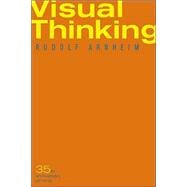
Note: Supplemental materials are not guaranteed with Rental or Used book purchases.
Purchase Benefits
|
|||||
|
2 | (2) | |||
|
4 | (2) | |||
|
6 | (2) | |||
|
8 | (5) | |||
|
13 | (24) | |||
|
13 | (2) | |||
|
15 | (2) | |||
|
17 | (1) | |||
|
17 | (2) | |||
|
19 | (4) | |||
|
23 | (3) | |||
|
26 | (1) | |||
|
27 | (2) | |||
|
29 | (2) | |||
|
31 | (2) | |||
|
33 | (4) | |||
|
37 | (17) | |||
|
37 | (3) | |||
|
40 | (3) | |||
|
43 | (3) | |||
|
46 | (1) | |||
|
47 | (4) | |||
|
51 | (1) | |||
|
52 | (2) | |||
|
54 | (26) | |||
|
54 | (6) | |||
|
60 | (5) | |||
|
65 | (1) | |||
|
66 | (3) | |||
|
69 | (3) | |||
|
72 | (8) | |||
|
80 | (17) | |||
|
81 | (3) | |||
|
84 | (3) | |||
|
87 | (2) | |||
|
89 | (1) | |||
|
90 | (7) | |||
|
97 | (19) | |||
|
98 | (2) | |||
|
100 | (2) | |||
|
102 | (5) | |||
|
107 | (2) | |||
|
109 | (7) | |||
|
116 | (19) | |||
|
117 | (1) | |||
|
118 | (2) | |||
|
120 | (9) | |||
|
129 | (6) | |||
|
135 | (18) | |||
|
135 | (5) | |||
|
140 | (4) | |||
|
144 | (4) | |||
|
148 | (2) | |||
|
150 | (3) | |||
|
153 | (20) | |||
|
154 | (3) | |||
|
157 | (6) | |||
|
163 | (10) | |||
|
|||||
| 10. What Abstraction Is | 173 | (15) | |||
|
174 | (4) | |||
|
178 | (4) | |||
|
182 | (4) | |||
|
186 | (2) | |||
| 11. With Feet on the Ground | 188 | (20) | |||
|
188 | (3) | |||
|
191 | (3) | |||
|
194 | (5) | |||
|
199 | (3) | |||
|
202 | (6) | |||
| 12. Thinking With Pure Shapes | 208 | (18) | |||
|
208 | (3) | |||
|
211 | (2) | |||
|
213 | (4) | |||
|
217 | (5) | |||
|
222 | (4) | |||
| 13. Words in Their Place | 226 | (28) | |||
|
227 | (2) | |||
|
229 | (3) | |||
|
232 | (1) | |||
|
233 | (5) | |||
|
238 | (2) | |||
|
240 | (2) | |||
|
242 | (4) | |||
|
246 | (5) | |||
|
251 | (3) | |||
| 14. Art and Thought | 254 | (20) | |||
|
255 | (5) | |||
|
260 | (3) | |||
|
263 | (6) | |||
|
269 | (5) | |||
| 15. Models for Theory | 274 | (20) | |||
|
274 | (6) | |||
|
280 | (2) | |||
|
282 | (1) | |||
|
283 | (4) | |||
|
287 | (3) | |||
|
290 | (4) | |||
| 16. Vision in Education | 294 | (23) | |||
|
295 | (1) | |||
|
296 | (3) | |||
|
299 | (2) | |||
|
301 | (4) | |||
|
305 | (3) | |||
|
308 | (5) | |||
|
313 | (2) | |||
|
315 | (2) | |||
| Notes | 317 | (8) | |||
| Bibliography | 325 | (14) | |||
| Index | 339 |
The New copy of this book will include any supplemental materials advertised. Please check the title of the book to determine if it should include any access cards, study guides, lab manuals, CDs, etc.
The Used, Rental and eBook copies of this book are not guaranteed to include any supplemental materials. Typically, only the book itself is included. This is true even if the title states it includes any access cards, study guides, lab manuals, CDs, etc.